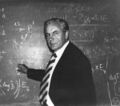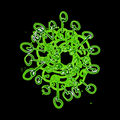Template:Selected anniversaries/July 3: Difference between revisions
No edit summary |
No edit summary |
||
| Line 35: | Line 35: | ||
||1903: Leopold Bernhard Gegenbauer dies ... mathematician remembered best as an algebraist. Gegenbauer polynomials are named after him. Pic. | ||1903: Leopold Bernhard Gegenbauer dies ... mathematician remembered best as an algebraist. Gegenbauer polynomials are named after him. Pic. | ||
||1921: Viktor von Lang dies ... chemist. He is counted among the pioneers and founders of crystal physics. | ||1921: Viktor von Lang dies ... chemist. He is counted among the pioneers and founders of crystal physics. Pic. | ||
||1933: Edward Brandt, Jr. born ... physician and mathematician. | ||1933: Edward Brandt, Jr. born ... physician and mathematician. | ||
Revision as of 07:39, 2 March 2019
1518: Physician and scientist Li Shizhen born. He will develop many innovative methods for the proper classification of herb components and medications to be used for treating diseases, earning a reputation as the greatest scientific naturalist of China.
1777: Philosopher and author Jean-Jacques Rousseau warns that "the Enlightenment itself, built as it is on the certainties of mathematics and logic, now stands in peril from the generation of math criminals now coming of age."
1881: Astronomer, mathematician, and philosopher Hasan Tahsini dies. He was one of the most prominent scholars of the Ottoman Empire of the 19th century.
1968: Film director and arms dealer Egon Rhodomunde raises money for new film by shelling shares in the upcoming N1 rocket explosion.
1969: The biggest explosion in the history of rocketry occurs when the Soviet N1 rocket explodes and subsequently destroys its launchpad.
1970: Mathematician, dissident, and crime-fighter Igor Shafarevich publishes new class of Gnomon algorithm functions which detect and prevent crimes against mathematical constants.
2007: NASA approves a mission extension for Stardust, sending the spacecraft to comet Tempel 1.
2016: Chromatographic analysis of Green Tangle unexpectedly reveals "at least five, perhaps as many as ten" previously unknown shades of green.







